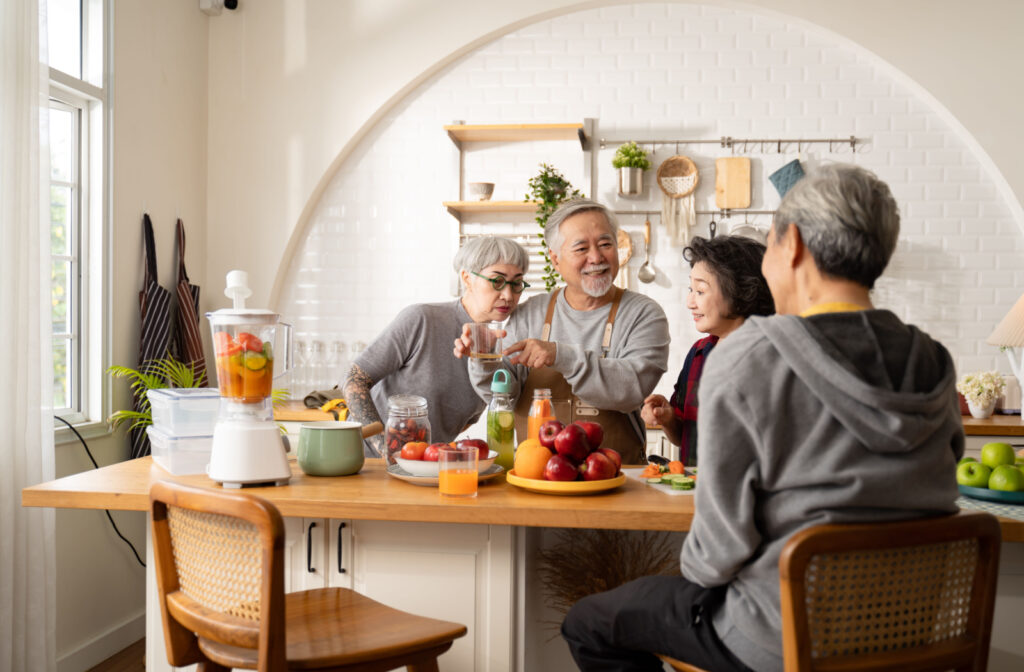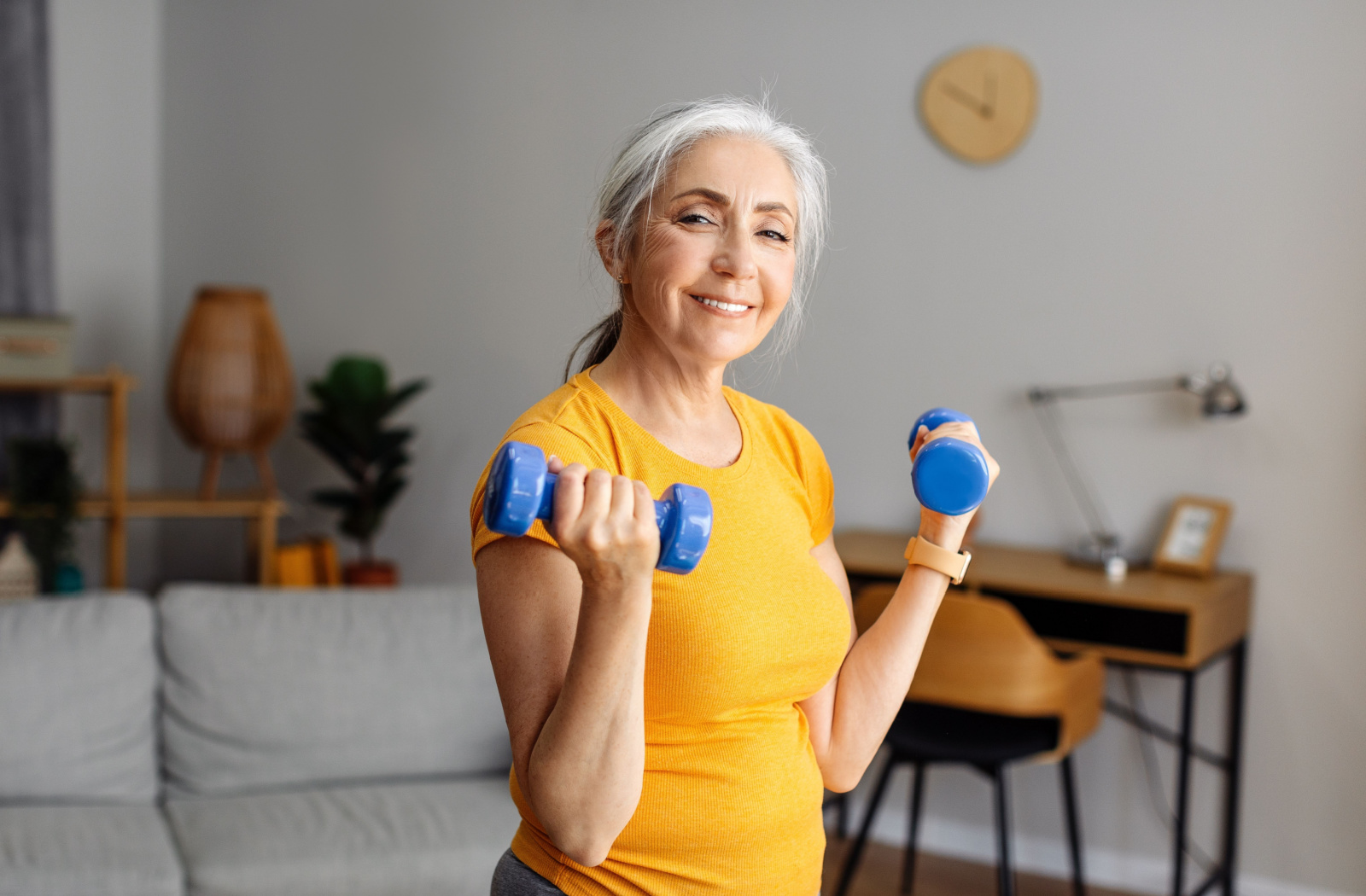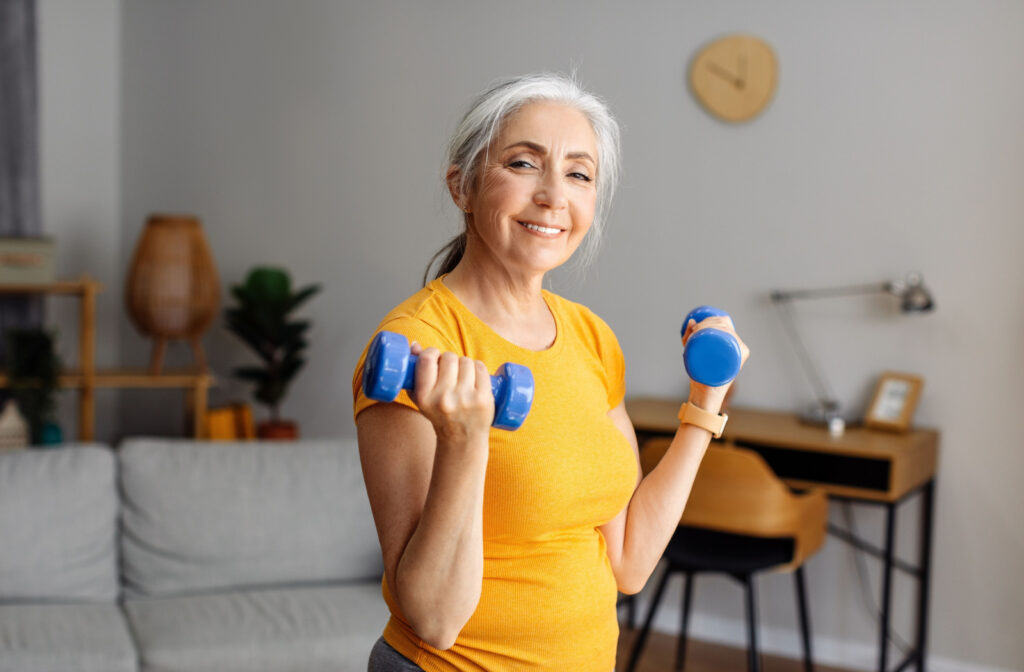Joints are an essential part of movement, and as you age, keeping your joints healthy becomes vital for maintaining an active and fulfilling lifestyle. Joint problems in older adults can lead to stiffness and mobility issues, which can contribute to needing assistance with daily activities.
By giving your joints a bit more attention and care with exercise, stretching, a healthy diet, weight management, and lifestyle changes, you can keep your joints healthy for longer.
Why Joint Health Is Important
Joints facilitate movement, provide support, and allow us to navigate the world around us. As we age, the importance of joint health becomes increasingly evident for overall well-being. Some ways our joints affect our health include:
- Mobility: Healthy joints enable smooth movement and ease in daily activities.
- Pain prevention: Prioritizing joint health reduces the risk of chronic pain and discomfort.
- Support for overall physical health: Strong and flexible joints contribute to stability, balance, and posture.
- Enhancing mental well-being: Maintaining joint health can positively impact emotional resilience and reduce stress.
- Active aging: Healthy joints allow for active participation in hobbies and social activities.
- Preserving independence: Joint health is crucial for performing daily tasks independently.
- Preventing chronic conditions: Proactive joint care helps mitigate the risk of arthritis and other joint-related issues.
Ways to Keep Joints Healthy as You Age
With age, you’re more prone to joint wear and tear. However, there are ways to keep your joints healthy to prevent or manage these changes.
Exercise Regularly
Staying active is crucial for maintaining joint health, but not all exercises are created equal. Low-impact exercises like swimming, tai chi, and cycling provide the benefits of exercise without putting excessive strain on the joints.
These activities promote cardiovascular health, muscle strength, and overall well-being. The key for older adults is engaging in activities that offer a good workout while minimizing the stress on their joints to preserve their integrity and functionality.
Warm-Up & Cool-Down Routines
Your joints can benefit from a gentle warm-up routine before physical activity and cool down after. As you age, the cartilage at the end of where the bones meet can degenerate, making it essential to take the time to warm the muscles around the joints.
Gentle stretching, light aerobics, or a short walk can help increase blood flow to the joints, promoting flexibility and reducing the risk of injury. A warm-up allows for a smoother transition into more strenuous activities.
Maintain a Healthy Weight
Carrying excess weight can put undue stress on the joints, particularly the knees and hips, and lead to cartilage wear and pain. Joints have cartilage at the ends of where the bones meet, which helps the bones glide over one another without rubbing against each other.
Adopting a balanced diet and staying physically active can help manage weight and reduce the strain on joints, promoting a healthier and more comfortable day-to-day experience.
Stay Hydrated for Joint Lubrication
Proper hydration provides water to make synovial fluid inside the joints, whereas dehydration can lead to a reduction in synovial fluid, causing joints to become stiff and less flexible. Common signs of dehydration are usually excessive thirst and muscle cramps. However, dehydration can also cause joint pain because joint cartilage is mainly water.
Drinking plenty of water throughout the day supports joint lubrication and helps maintain their smooth functionality. Daily water recommendations can vary depending on age and activity levels.
Prioritize a Nutrient-Healthy Diet
Nutrition plays a vital role in joint and overall health. Incorporating fruits, vegetables, fish, nuts, and seeds that are anti-inflammatory foods can reduce inflammation in the joints. A well-rounded and nutrient-dense diet is an investment in the longevity and resilience of your joints.
Quit Smoking
Smoking harms your joints and can increase your risk of osteoporosis and rheumatoid arthritis. Speak to your healthcare provider about effective ways to quit smoking.
Practice Good Posture
Poor posture can put extra pressure on your joints, leading to pain, discomfort, and excess cartilage wear. Maintaining good posture helps your muscles work more effectively in supporting your joints. The key to good posture is to keep your spine straight and your shoulders back when standing, sitting, or lifting.

Support Your Health at Hamilton House
Taking care of your joints as you age is critical in maintaining overall health and the ability to move with ease and comfort. The small changes you make to your lifestyle can significantly reduce your risk of developing joint problems.
Although it may be challenging to prioritize your joint health, senior living communities offer a positive atmosphere where you can connect with others who have similar goals. If you’re interested, reach out to Hamilton House Senior Living or schedule a tour to discover how we can support an active and vibrant senior living experience for you.




